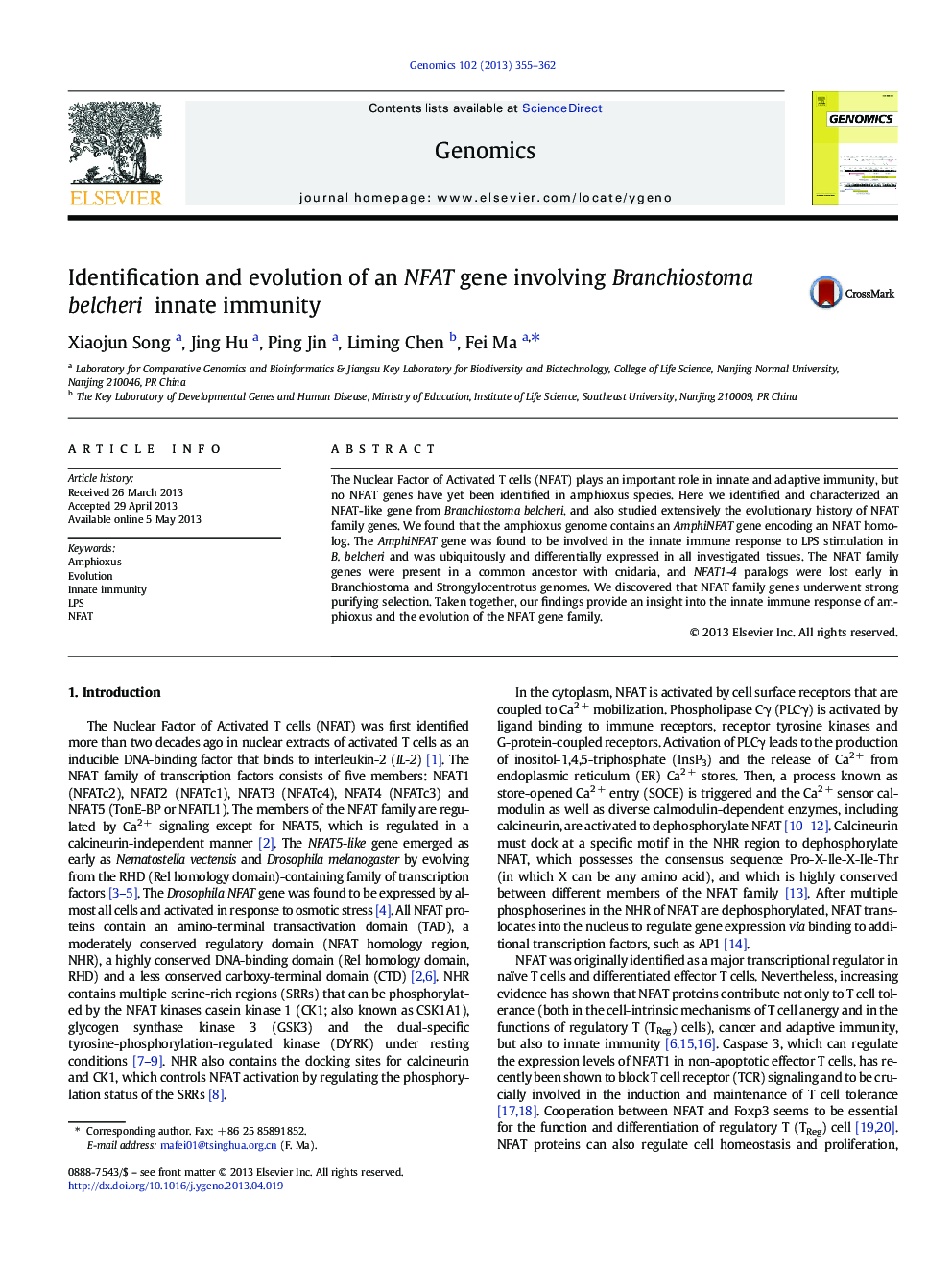| Article ID | Journal | Published Year | Pages | File Type |
|---|---|---|---|---|
| 5907815 | Genomics | 2013 | 8 Pages |
â¢Amphioxus genome contains an AmphiNFAT which is similar to human NFAT5.â¢AmphiNFAT gene was ubiquitously and differentially expressed in investigated tissues.â¢AmphiNFAT gene was involved in the innate immune response of LPS stimulation.â¢Structure and conservation motifs of NFAT family genes present regular changes.â¢NFAT genes underwent purifying selection and contained many positive selection sites.
The Nuclear Factor of Activated T cells (NFAT) plays an important role in innate and adaptive immunity, but no NFAT genes have yet been identified in amphioxus species. Here we identified and characterized an NFAT-like gene from Branchiostoma belcheri, and also studied extensively the evolutionary history of NFAT family genes. We found that the amphioxus genome contains an AmphiNFAT gene encoding an NFAT homolog. The AmphiNFAT gene was found to be involved in the innate immune response to LPS stimulation in B. belcheri and was ubiquitously and differentially expressed in all investigated tissues. The NFAT family genes were present in a common ancestor with cnidaria, and NFAT1-4 paralogs were lost early in Branchiostoma and Strongylocentrotus genomes. We discovered that NFAT family genes underwent strong purifying selection. Taken together, our findings provide an insight into the innate immune response of amphioxus and the evolution of the NFAT gene family.
